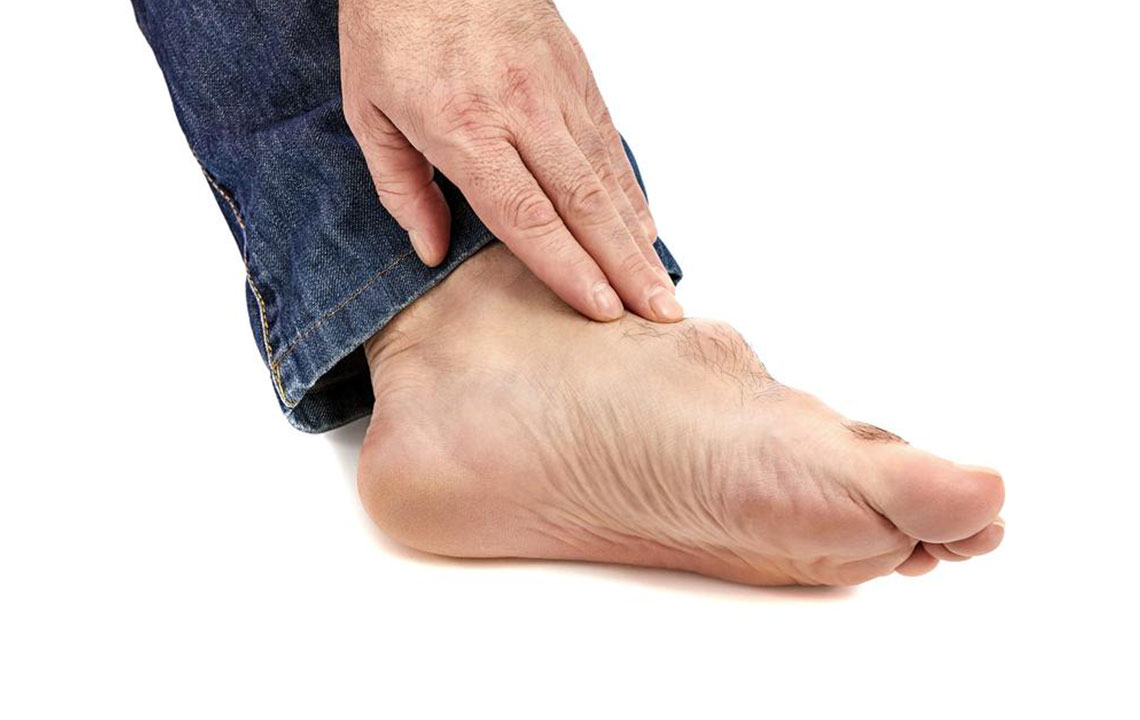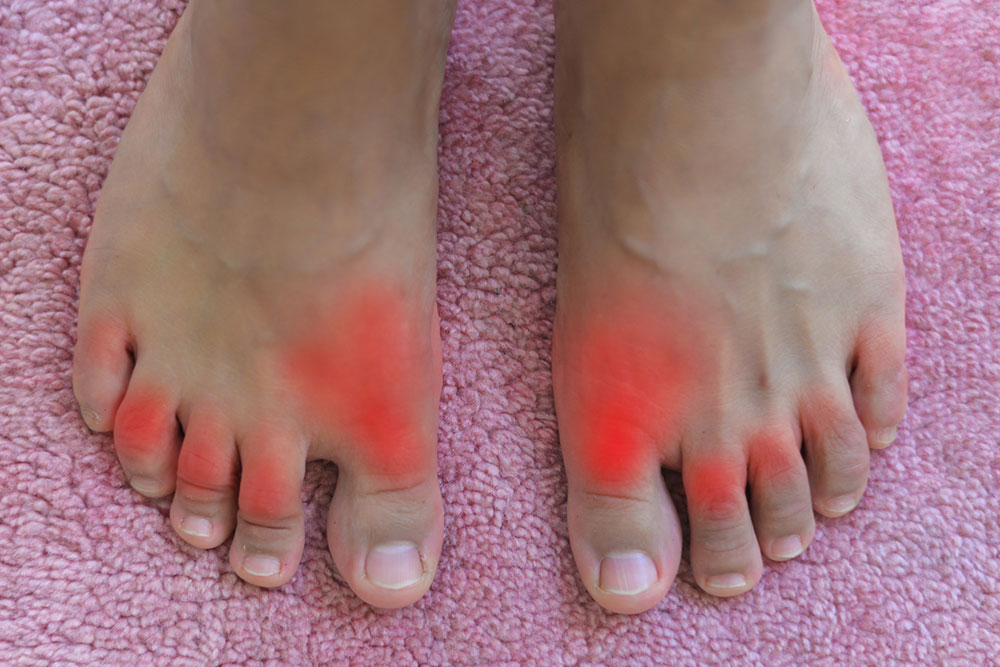Ultimate Guide to Gout: Causes, Symptoms, and Effective Treatment Strategies
This comprehensive guide explores gout from causes to treatment options. It details risk factors like diet, genetics, and lifestyle, and highlights modern management strategies including medication and lifestyle changes. Essential for understanding this painful condition, the article provides valuable insights into prevention and effective treatment to improve quality of life.

Ultimate Guide to Gout: Causes, Symptoms, and Effective Treatment Strategies
Gout is a complex form of arthritis characterized by sudden and severe attacks of pain, swelling, redness, and tenderness in the joints. It is caused by the accumulation of excess uric acid in the bloodstream, which crystallizes and deposits in the joints, leading to inflammation. Understanding gout is essential because it not only causes significant discomfort but can also lead to serious health complications like kidney stones and renal failure if left untreated. In this comprehensive guide, we explore the causes, symptoms, diagnosis, risk factors, and modern treatment approaches for managing gout effectively.
Gout affects approximately 4% of adults across the globe, with a higher prevalence among men over the age of 40. Although it can affect anyone, it has a known tendency to target specific populations, often those with genetic predispositions, lifestyle factors, or preexisting health conditions. Recognizing the early signs and understanding the underlying causes are crucial steps in effective management and prevention of future attacks.
Causes of Gout
The primary cause of gout is hyperuricemia, a condition characterized by elevated uric acid levels in the blood. Uric acid is a waste product formed when the body breaks down purines, which are substances found naturally in the body and in certain foods. When uric acid surpasses normal levels, it can crystallize and deposit in the joints.
Several factors contribute to the development of hyperuricemia:
Dietary habits: Consuming foods high in purines such as red meats, shellfish, alcohol (especially beer), and sugary beverages increases uric acid production.
Obesity: Excess weight puts additional pressure on joints and impairs kidney function, reducing the efficiency of uric acid elimination.
Genetics: A family history of gout significantly increases the risk, indicating a genetic predisposition to uric acid metabolism issues.
Kidney function: Impaired kidney function hampers uric acid excretion, leading to its accumulation.
Medications: Certain drugs, such as diuretics, aspirin, and immunosuppressants, can raise uric acid levels.
Medical conditions: Conditions like hypertension, diabetes, and metabolic syndrome are linked with higher uric acid levels.
Symptoms of Gout
Gout typically manifests in episodes known as gout attacks, which are characterized by sudden and intense pain, often waking individuals from sleep. The hallmark of gout is the rapid onset of symptoms, which can escalate within hours.
Common signs and symptoms include:
Severe joint pain: The pain usually starts at the big toe but can also affect ankles, knees, wrists, and elbows.
Swelling and inflammation: The affected joint becomes visibly swollen, warm, and tender.
Redness and warmth: The skin surrounding the joint may appear red and feel warm to the touch.
Limited range of motion: Movement may be painful and restricted during gout attacks.
Fever: In some cases, mild fever accompanies acute attacks.
Repeated gout attacks can lead to joint damage and chronic gouty arthritis if not properly managed. Long-term complications include tophi, which are deposits of uric acid crystals appearing as lumps under the skin near affected joints.
Diagnosis of Gout
Diagnosing gout involves a combination of medical history, physical examination, and laboratory tests. A definitive diagnosis is usually confirmed through joint fluid analysis, where a healthcare provider extracts fluid from the affected joint to examine for uric acid crystals under a microscope.
Additional diagnostic methods include:
Blood tests: Measuring serum uric acid levels, although high levels alone do not confirm gout, as some individuals with hyperuricemia never develop symptoms.
Imaging: X-rays can reveal joint damage, while ultrasound or dual-energy CT scans can detect tophi or uric acid crystal deposits.
Urine tests: 24-hour urine collection can evaluate uric acid excretion patterns.
Risk Factors for Gout
Understanding the risk factors associated with gout can aid in prevention and early intervention. These include:
Genetics: Family history increases susceptibility.
Diet: Consuming high-purine foods and alcohol increases risk.
Obesity: Excess body weight is a significant risk factor.
Medical conditions: Hypertension, kidney disease, and metabolic syndromes are linked with higher uric acid levels.
Medications: Use of certain drugs can elevate uric acid levels.
Aging: The risk increases with age, especially in men over 40.
Modern Treatment and Management of Gout
Effective management of gout involves a multi-pronged approach that includes medication, lifestyle modifications, and dietary adjustments. The primary goal is to relieve pain during acute attacks, lower uric acid levels to prevent future episodes, and minimize damage to joints.
Medications are tailored according to the severity and frequency of attacks:
NSAIDs: Nonsteroidal anti-inflammatory drugs, such as ibuprofen and naproxen, are used to reduce pain and inflammation during attacks.
Colchicine: This medication can effectively decrease inflammation and is often used for acute attacks or as a preventive measure.
Corticosteroids: Steroids may be prescribed for patients unable to tolerate NSAIDs or colchicine.
Uric acid-lowering drugs: Long-term treatments include medications like allopurinol and febuxostat, which reduce uric acid production, and probenecid, which increases uric acid excretion.
Complementary therapies and lifestyle modifications play vital roles in managing gout:
Dietary Changes: Reducing intake of purine-rich foods, alcohol, and sugary drinks significantly lowers flare risk.
Hydration: Drinking plenty of water helps promote uric acid excretion.
Weight Management: Achieving and maintaining a healthy weight decreases joint stress and uric acid levels.
Exercise: Regular physical activity improves overall health and aids in weight control.
Avoiding Triggers: Identifying and steering clear of personal triggers can prevent future gout attacks.
Living with gout requires ongoing management and regular monitoring by healthcare professionals. Patients are encouraged to have routine blood tests to track uric acid levels, adhere to medication regimens, and adopt healthy lifestyle habits to reduce the frequency and severity of attacks.
Advances in research continue to improve our understanding of gout, leading to more effective and personalized treatments. Early diagnosis and comprehensive management are essential to maintaining joint health and quality of life for individuals affected by this condition.





